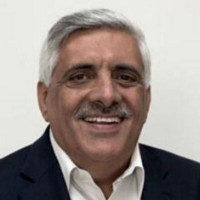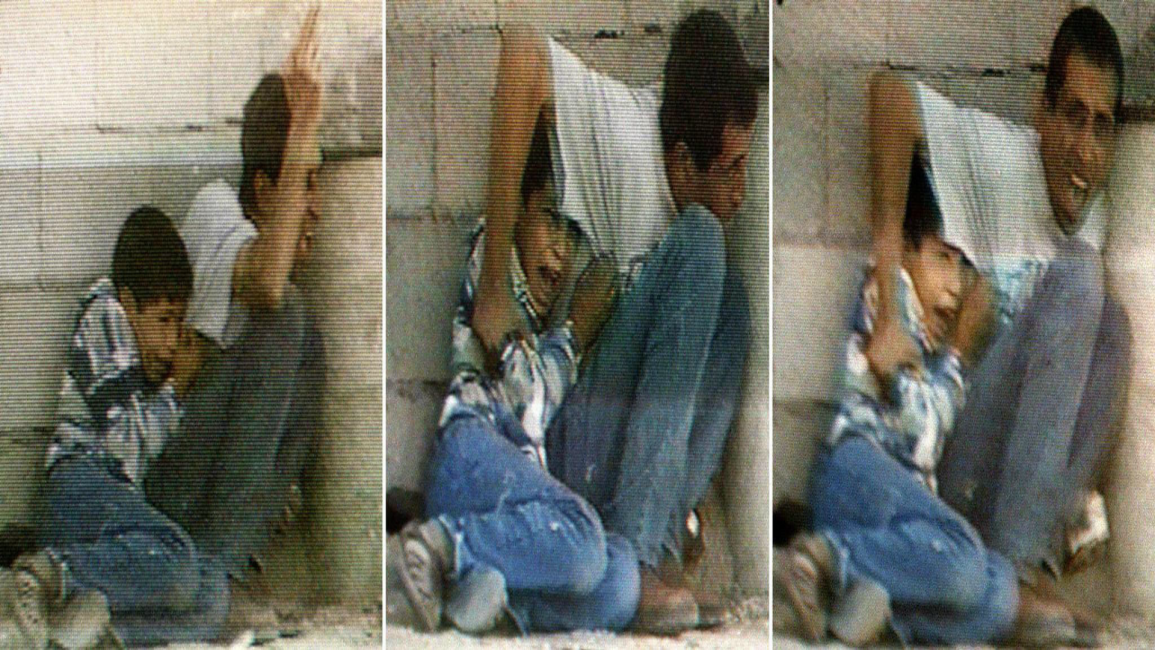
The Mohammad Dura nightmare still haunts us
The Palestinian struggle is often summarised in images.
The images broadcast today - September 30th 2016 - have been of US President Barack Obama wearing the Jewish kippah eulogising Shimon Peres. The hypocrisy of the image lies in the fact that in his eulogy, President Obama repeated what Peres had told him, that "the Jewish people were not born to rule another people."
A few weeks earlier, Obama's administration had signed an agreement to fund Israel with $38 billion over ten years.
Palestinian President Mahmoud Abbas attending the same event is seen shaking hands with current Israeli Prime Minister Benyamin Netanyahu, with the latter saying that the meeting was well overdue.
Not present at the event were the two Arab leaders who made peace with Israel, Egypt's Abdel Fatah al-Sisi and Jordan's King Abdullah II. In Jordan's capital Amman, the downtown area was crowded with protestors criticising the country's most recent agreement with Israel to buy some $10 billion worth of Israeli gas.
Yet despite all these images, perhaps the one image that few gave any attention to is one that happened 16 years ago, and is still engraved in many people’s memory.
It is that of Mohammad al-Dura - the ten-year-old Palestinian crouching in the lap of his father, who was unable to save him from the Israeli gunfire aimed at putting out Palestinian anger during the second Intifada that erupted in the fall of 2000.
The Dura image has rattled the Israelis to such an extent, that for years Israeli propagandists have been arguing and even legally fighting the claims that they are behind the incident.
What the Dura case shows, is precisely the problem that continues to haunt Palestinians and Arabs, namely the fact that like Mohammad Dura's father they are impotent in trying to protect their own people from the onslaught of the occupiers.
Palestinian and Arab impotency has come about as a result of a political strategy that has no teeth. Palestinian and Arab leaders hope to see Palestine liberated through negotiations, but are unable or unwilling to provide negotiators with the tools needed to be able to extract the concessions they need, to be able to present a deal that the people can accept and live with.
 |
Palestinian and Arab impotency has come about as a result of a political strategy that has no teeth |  |
Dismissing the military strategy which clearly Palestinians and Arabs have long given up on, it is hard to understand why Palestinians are not more active in areas that could strengthen their negotiations stand and help shift the balance of forces to a more neutral one. At present, Israel is rightly worried about a campaign that began with Palestinian academics and civil society organisations and has been supported on a global level.
The Boycott Divestment and Sanctions is a totally nonviolent effort by supporters of Palestine, which is aimed at isolating Israel until it concedes to ending the occupation and dealing with the issue of Palestinian refugees.
Mahmoud Abbas, who along with Hamas leader Khaled Meshal has publicly supported nonviolent popular protests as a legitimate means of resistance, have done little to encourage or support this form of protest, leaving a handful of brave Palestinians to carry out weekly Friday protests.
When it comes to boycotts, divestment and sanctions, Mahmoud Abbas said in response to a South African activist at the funeral of Nelson Mandela, that Palestine supports the boycott of settlements but not the boycott of Israel.
 |
The images of September 30th at the Shimon Peres funeral will soon disappear |  |
Of course, a national Palestinian strategy for liberation can't be even thought of without resolving the current split within the Palestinian national movement, between Hamas and the PLO, as well as between the powers that be in Ramallah and those in Gaza.
By limiting his fight for the liberation of Palestine to the diplomatic channel, Mahmoud Abbas had little choice but to attend a funeral of his partner in the Oslo Accords. His attendance at the funeral was entirely in line with his own ethos and policies, despite this exposing the impotence and lack of vision that this single track policy will lead to.
During the Peres funeral, US President Barack Obama remarked that Mahmoud Abbas' presence at the funeral serves as "a reminder of the unfinished business of peace".
While Obama did make reference to the Palestinian leader and the unfinished business of peace, the Prime Minister of Israel didn't even recognise his presence in his public statement. It took an Israeli parliamentarian to slam her own prime minister for the snub.
The images of September 30th at the Shimon Peres funeral will soon disappear. But for many people, that single image of Mohammad Dura hiding from the Israeli bullets will continue to haunt people of goodwill until real and lasting peace can come to Palestine.
Daoud Kuttab is an award winning Palestinian journalist and former Ferris Professor of Journalism at Princeton University. Follow him on @daoudkuttab
Opinions expressed in this article remain those of the author and do not necessarily represent those of The New Arab, its editorial board or staff.


![President Pezeshkian has denounced Israel's attacks on Lebanon [Getty]](/sites/default/files/styles/image_684x385/public/2173482924.jpeg?h=a5f2f23a&itok=q3evVtko)



 Follow the Middle East's top stories in English at The New Arab on Google News
Follow the Middle East's top stories in English at The New Arab on Google News


